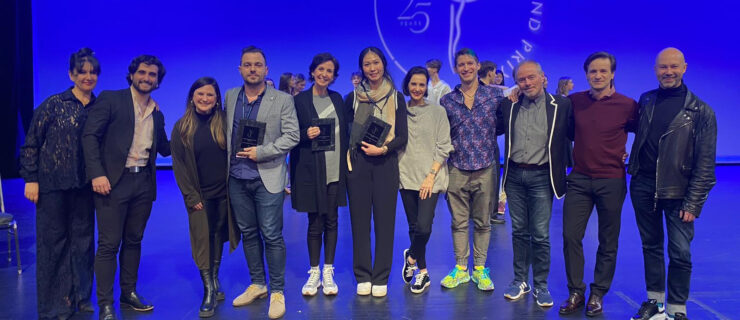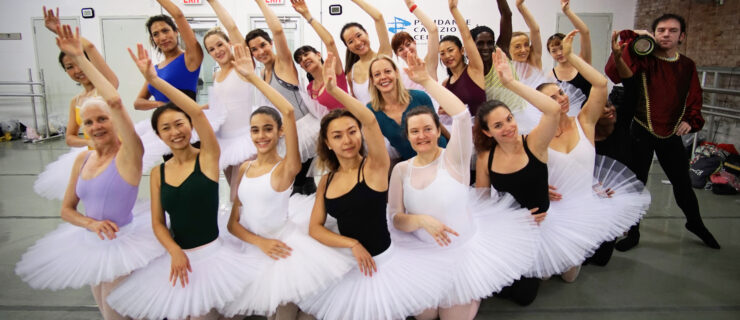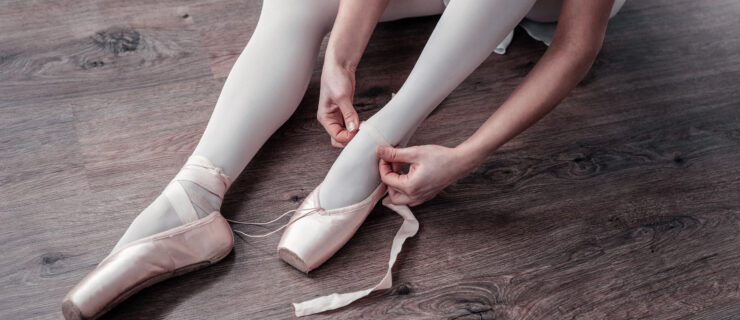My Week at the Prix de Lausanne: Lauren Hunter's Inspiring Journey
Lauren Hunter stands with her feet tightly crossed in fifth position, the number 102 pinned to the front of her leotard. The 15-year-old California native, who trains at Peninsula School of Performing Arts, is a long way from home, but she’s one step closer to achieving her dream of dancing professionally. Around her are dancers from Asia, Australia, South America and Europe, all candidates for the Prix de Lausanne, an international scholarship competition held each January in Switzerland. For the next week, a nine-member jury will carefully evaluate them during classes, coaching sessions and performances for a chance to win scholarships to major ballet schools. “I thought it would be a good time for me to open my horizons, to meet new people and see what the professional world is really like,” she says.
Hunter is one of approximately 70 young dancers selected to participate. Each candidate must choose from a selection of classical variations and more-contemporary solos by John Neumeier. For the last two months, Hunter has been training to perfect the second Odalisque variation from Le Corsaire, and Neumeier’s fleet-footed Bach Suite II. “I don’t have a lot of experience dancing contemporary,” she says. “It’s a challenge for me.”
Her dream is to dance with The Royal Ballet, and she hopes to make a good impression on director Kevin O’Hare, who is chairing the jury. “But I’m most excited about being around so many high-level dancers, especially coming from a small school,” she says. “I just want to represent my studio and myself well.” In January, Pointe followed Hunter to capture her week at the Prix.
 In Didy Veldman’s contemporary class. Photo by Mailys Fortune, Courtesy Prix de Lausanne.
In Didy Veldman’s contemporary class. Photo by Mailys Fortune, Courtesy Prix de Lausanne.
Sunday
12:30 pm: Registration
After having a day to adjust to the nine-hour time difference and do a little sightseeing, Hunter heads to Lausanne’s Beaulieu Theatre for registration. There she receives her number and is placed in Girls Group A. “I got to meet all the people in my group,” she says. “Afterwards we took our first class and got a chance to look around and see all the studios.”
 Eating lunch in the candidates’ lounge with her new friend, Australian candidate Rose Dalton. Photo by Gregory Bartadon, Courtesy Prix de Lausanne.
Eating lunch in the candidates’ lounge with her new friend, Australian candidate Rose Dalton. Photo by Gregory Bartadon, Courtesy Prix de Lausanne.
Monday
10:15 am: Classical variation run-through
After a warm-up class, Hunter has a chance to practice her Le Corsaire variation onstage. “I’m second in my group, and the girl before me is doing the same variation, so it’s kind of nerve-racking.” She also has to get used to the stage’s raked, or sloped, floor. “You kind of fall forward, so it’s a little scary, but once I’m dancing I don’t think about it.”
12 pm: Classical ballet class, with the jury observing
William Forsythe stager and master teacher Stefanie Arndt teaches Hunter’s first class in front of the jury, who sit behind a long table at the front of the studio. Dancers rotate spots after every combination so that everyone can be seen. Judges grade dancers on their artistry, musicality, courage, versatility and overall potential. “I was super-
nervous,” says Hunter. “I didn’t know we would have to wear pointe shoes for all of center.”
4 pm: Contemporary class
“I don’t take contemporary very often, so it’s very new for me,” says Hunter, who nevertheless stands right in front in international choreographer Didy Veldman’s class. “I like the teacher. She makes it fun.”
 Hunter and her parents heading back to their Airbnb after a long day of rehearsals. Photo by Gregory Bartadon, Courtesy Prix de Lausanne.
Hunter and her parents heading back to their Airbnb after a long day of rehearsals. Photo by Gregory Bartadon, Courtesy Prix de Lausanne.
Tuesday
11 am: Contemporary class
Today Hunter is starting to move more freely in her upper body. “She’s building off the combinations we learned the first day,” Hunter says. “Thursday we have our judging with the contemporary class, so that should be interesting.”
2 pm: Classical ballet class, with jury marking
“Everyone’s amazing here,” says Hunter. She pays attention to which dancers the jury watches and tries to learn from them. “The ones who smiled or had a nice upper body seemed to catch their eye.”
Towards the end, Arndt gives a lengthy enchaînement, and Hunter has to go in the first group. “I knew all the steps, but I was hesitant about them,” she says. “If I had been in the second group, maybe it would’ve been better. But other than that, class felt good.”
5:20 pm: Onstage contemporary coaching session
The dancers in Group A have group coaching sessions for their Neumeier variation with Laura Cazzaniga, a ballet mistress with Hamburg Ballet. As she rehearses the speedy Bach Suite II, Hunter feels the effects of the rake. “There are a lot of direction changes, and whenever you do turns upstage, it’s like you’re climbing a mountain,” she says. “Ms. Cazzaniga worked with us on the style so that we interpret it the way Neumeier wanted.”
 Hunter takes her first class in front of the jury. “Most of the time they have a poker face, so it’s hard to know what they’re thinking,” she says. Photo by Gregory Bartadon, Courtesy Prix de Lausanne.
Hunter takes her first class in front of the jury. “Most of the time they have a poker face, so it’s hard to know what they’re thinking,” she says. Photo by Gregory Bartadon, Courtesy Prix de Lausanne.
Wednesday
12:15–4 pm: Classical coaching
After morning class, Hunter has a six-minute private coaching session for her classical variation with former Paris Opéra Ballet étoile Monique Loudières. “Her demeanor was very kind, which helped me be more open to express myself and do well,” says Hunter. “She gave me a few arm corrections, and there was also a jumping section where she wanted my footwork to be quicker.”
 Receiving last minute coaching from Monique Loudières. Photo by Mailys Fortune, Courtesy Prix de Lausanne.
Receiving last minute coaching from Monique Loudières. Photo by Mailys Fortune, Courtesy Prix de Lausanne.
Thursday
9:15 am: Contemporary class, with jury marking
“I was super-worried about this,” says Hunter. “I thought this would be the hardest part of the competition.” However, she’s no longer dancing tentatively and wears a confident smile. “Everything just worked!” One of the first things Veldman has the dancers do is run around the studio, freestyle. “I think that helped us loosen up and not get too worked up about the judges being there.”
11:30 am: Classical coaching
Loudières gives Hunter some last-minute corrections about her développé (“don’t throw your leg”) and then speaks quietly with her. “She said I had the confidence to be able to perform strongly,” says Hunter. “If she thinks I’m ready, I think everybody else will think so too.”
2:15–3:40 pm: Contemporary coaching
After a group coaching session with Cazzaniga in front of the jury, Hunter has a one-on-one session with Yohan Stegli, deputy of the artistic director of the National Youth Ballet of Germany. Both work with her on her sissonne to arabesque. “I have a chronic problem with my ribs splaying out.”
 Hunter’s name is called as one of the finalists. Photo by Gregory Bartadon, Courtesy Prix de Lausanne.
Hunter’s name is called as one of the finalists. Photo by Gregory Bartadon, Courtesy Prix de Lausanne.
Friday
9:30 am: Selections, or semifinals
Hunter performs her classical variation first, and despite a minor bobble with her final piqué turn, everything goes well. “I felt on my legs—I was grounded and remembering corrections as I was going along.”
During her contemporary solo, she catches her pointe shoe on the floor and slips. “That freaked me out a little, but I got back into focus.” After she comes offstage, she feels grateful and relieved. “I’ve been preparing for this moment for how many months now, and I finally did it!”
6:45 pm: Finalists announced
The candidates gather to hear who will advance to the final round. “I thought, It’s okay if I don’t get in—there are so many good dancers here,” says Hunter. To her surprise, her name is called. “It was the craziest feeling! I couldn’t sleep that night because I was so excited.”
 Hunter takes one last bow after winning a scholarship. Photo by Gregory Bartadon, Courtesy Prix de Lausanne.
Hunter takes one last bow after winning a scholarship. Photo by Gregory Bartadon, Courtesy Prix de Lausanne.
Saturday
2:30 pm: Final round
“I was so happy to be in the finals that I wasn’t thinking about winning a prize,” says Hunter. Technically assured and confident, she gives her best performances of the week. “I felt something click during the contemporary.”
6 pm: Awards ceremony
Hunter wins fifth place, and a scholarship to a Prix de Lausanne partner school of her choice. “I didn’t expect anything!” she says. Her next step is to visit The Royal Ballet School to make sure it’s the right fit. “The fact that I now get to go to a big school just hit me—this is actually happening!”





